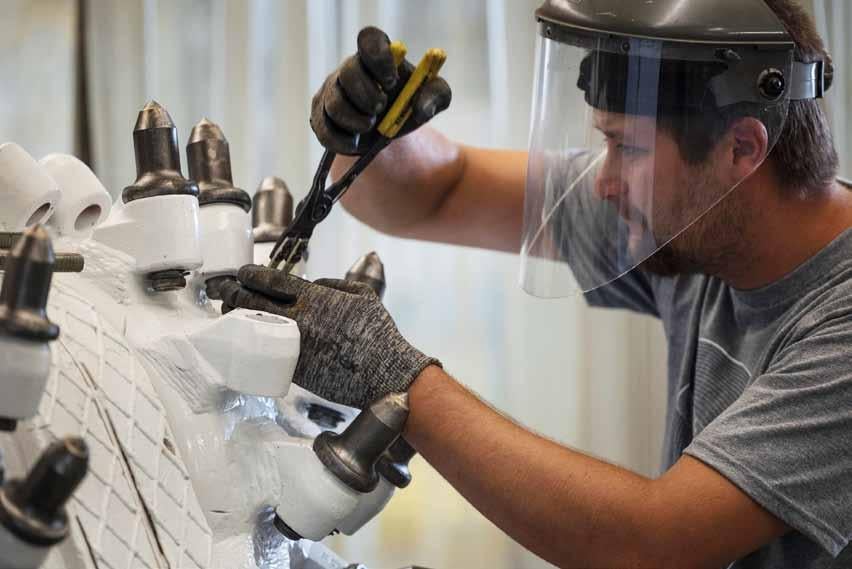
3 minute read
Mining needs its next generation of workers
By Ryan Montpellier, Executive Director, MiHR
Mining is essential to our way of life today and to the world we want to create tomorrow. Yet, Canada’s mining industry is facing a tightening labour market that may surpass historic fluctuations caused by boom-and-bust commodity cycles. More than ever, mining needs to attract the next generation of the workforce.
According to the World Bank’s Metals & Minerals Price index, mineral prices doubled since March 2020. sector spending also grew, yet at the same time employers are reporting critical labour shortage challenges according to Statistics Canada’s Canadian Survey on Business Conditions – with 27 per cent in Q1 2022, up from 17 per cent in Q2 2021. The Mining industry Human Resource Council’s (MiHR) labour market research also indicates record low mining employment, with nearly 10,000 vacant positions.
Longer-term rises in minerals and metals demand could compound labour shortages as the workforce may need to expand quickly. The transition to a clean economy may require more critical minerals than are currently able to be produced. With Canada’s abundant availability of natural resources, the federal government looks to seize this opportunity through a new $3.8 billion federal Critical Minerals strategy in Budget 2022 to support of quick expansion of Canada’s minerals and metals sector.
In turn, industry needs to address employment challenges to meet hiring needs. An aging workforce, negative youth perceptions and dwindling post-secondary enrolment in mining related programs are a few of the direst hurdles. Undergraduate mining engineering enrolment is down 42 per cent from 2014 to 2020, the largest drop of any engineering type, and geological engineering enrolment is down 36 per cent over that same period.
MiHR aims to help solve these issues. Stemming from its National Youth Mining Career Awareness strategy 20212026 – an industry stakeholder-led study on increasing youth engagement, transforming perceptions, building industry/education alliances and promoting diversity –
Photos courtesy of Iron Ore Company of Canada.
MiHR created the We Need Mining. Mining Needs You. career awareness campaign. It supports industry HR efforts by promoting mining careers as innovative, challenging and rewarding.
The I Chose Mining. Mining Chose Me. Scholarship Program was launched in 2021 as part of the campaign to support students in mining-related post-secondary programs. It is awarding 10 $2,500 scholarships between 2021 and 2025 to raise awareness, showcase youth contributions and support equity, diversity and inclusion in mining.
MiHR’s Gearing Up wage subsidy program provides mining employers up to $7,000 to support post-secondary job placements. since 2017, Gearing up has distributed $10 million in funding to support over 1,600 students – with the program currently slated to create a total of over 2,000 placements. similarly, the Green Jobs program provides subsidies between $25,000 and $32,000 to employers who hire job-ready youth for placements or training opportunities that focus on clean technology and innovation.
MiHR also provides support to workers, with diversity programs such as Safe Workplaces for All to address and help mitigate sexual harassment in mining; Gender equity in Mining Works to provide organizations with proven, industry-developed tools to help eliminate systemic barriers to workplace gender inclusion; and a suite of eLearning courses to educate workers on intercultural and Indigenous awareness.
While our initiatives are helping, more needs to be done. Through industry collaboration, we must work together to attract the next generation of mining workers by ensuring youth understand why we need mining, why they need to be part of this rewarding industry, and mining’s role in the transition to a clean economy.
Industry stakeholders can contact MiHR to discuss collaborating to build an inclusive, skilled and sustainable Canadian mining workforce at info@mihr.ca or by visiting MiHR.ca.










